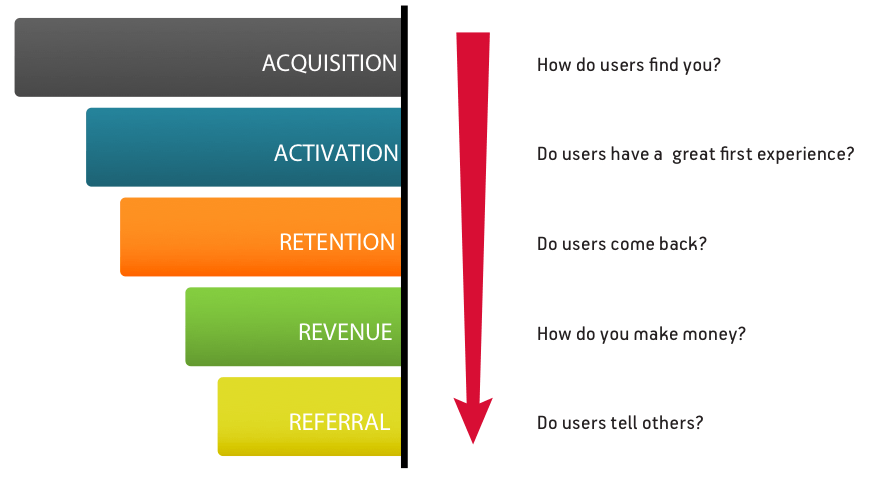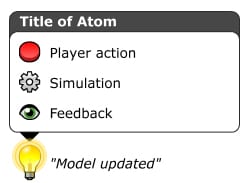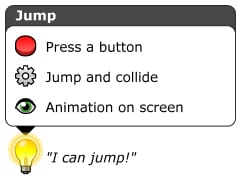On a project like this I usually make a Google Spreadsheet to keep track of the work to be done, something I started doing when I was editing a print magazine. Once all the pages to be created are in the spreadsheet I will add a formula to calculate what percentage complete the project is.
Planning
Success criteria
I have done some research into success and completion rates of MOOCs, including a joint paper from Harvard and MIT analysing 1.7 million participants on the edX platform.
Instead of using the population of everyone who signed up for a course, the researchers used the metric of everyone who actually visited the course.
the researchers redefined their population of learners from those who simply registered for courses (and took no subsequent action) — a metric used in prior findings and often cited by MOOC providers — to those who participated (i.e., by logging into the course at least once).
This is similar to the “Pirate Metrics” approach of measuring Acquisition, Activation, Retention, Revenue, Renewal from Dave McClure which emphasises that simply getting people to sign up (Acquisiton) is fairly meaningless.

(From Startitup)
The research also found that many participants are teachers, which is interesting as the Raspberry Pi Foundation has chosen to focus it’s efforts in this area on reaching teachers. This might mean it would be worth reaching out to parents to actually participate in my course as opposed to just aiming for them to encourage their children to sign up.
Among 200,000 participants who responded to a survey about teaching, 39 percent self-identified as a past or current teacher. Twenty-one percent of those reported teaching in the course topic area.
Another finding was that Computer Science courses had four times the participation of Science, Humanities and Social Science courses, but Science and Computer Science courses only had about half the completion rates of Social Science and Humanities courses. I think this may reflect the fact that learning in these subjects has a higher cognitive and equipment hurdle to spending time learning, which is something that has driven the direction of my project.
A New Yorker article about the shortcomings of MOOCs described Control Theory, and how it was used in the early 1960s to create improvements in literacy and numeracy levels in younger children, who were given different activities and assessment frequencies according to their progress.
Other research has indicated that frequent testing improves retention, which fits in with the game mechanics structure.
I found several more research papers via the New Yorker article which I will investigate.
Final Criteria
What is Gameful Design?
Gameful Design is design of learning environments (broadly interpreted) where game mechanics are intrinsic, in order to induce intrinsic motivation in the learner, similar to the motivation of someone playing a video game.
To cause this motivation, Skill Atoms are chained together. Players learn something, use it and receive a payoff, and this then enables them to learn and use the next thing.
This is different to gamification where elements of game design such as points and badges are added to an existing system, which is a more extrinsic motivation.
I see the problem with gamification is that it misses out the learning and enabling the next thing parts, and just focuses on doing something and getting a payoff.
Gameful Design relies on the assertion that people are motivated by learning whenever their basic needs are met, and that this is the basis for play for all ages. In gamified systems the payoff of points isn’t enough to encourage use by itself so you end up with rewards for points and then you’ve potentially got players cheating the system because the rewards are more important to them than the learning.
A teacher in TES a few weeks ago described what happened when he moved his Year 3 (about age 8) class away from points for completing work. He found that his students were as motivated as before and during a class debate it was decided that learning was a reward in itself – a move from a gamified system to a gameful one.
See papers by Dichev, Deterding and the article by Cook.
Changes in Project Scope
After investigating the content available and the technical methods of putting it together online I decided to use a tighter focus on getting the user up and running quickly with a Raspberry Pi, ranging from guiding them to choose the best model for them, through first steps in physical computing, to building a project of their own.
I have been researching Skill Atoms, following reading a paper by Dichev et al about Gameful Design, then Cook’s article about Game Mechanics. A Skill Atom is the smallest element of a game, or a gameful system, and is where an individual skill is learned and feedback given.
This is the framework Cook has defined for a Skill Atom:
This is the diagram of the most basic skill in Super Mario:
I have been teaching physical computing classes at my local home education group to primary and lower secondary aged students along with their parents with both the Raspberry Pi and the BBC Micro:Bit and we have found that the minor technical glitches of getting the things set up are almost insurmountable and have very much got in the way of learning.
To be fair, we have been using tablets and both boards are designed to be used with computers and any tablet functionality is an add-on. However, I have worked out how to do this stuff myself, a slower process than it could have been if something like an onboarding process had been in place.
For my previous project I did research into Flipped Learning, a technique where students learn the basics of a topic in a self-directed manner, often using videos, then come together in a classroom other other setting for exercises, projects and discussions.
I am seeing my learning system as the offsite portion of learning, and that it would then be more productive to work on projects in a group.
The Player Model
The player is an entity that is driven, consciously or unconsciously, to learn new skills high in perceived value (Cook, 2007)
Skill
A behaviour that the player uses to manipulate the world, which can be conceptual, for example navigation, or physical, such as hammering a nail (Cook, 2007).
Driven to learn
People will begin playing by default if not pursuing activities related to food or shelter, described by Biederman and Vessel (2006) as Infovore behaviour in an article investigating the changes in the brain in response to visual input:
“Neuropsychologists have found that visual input activates receptors in the parts of the brain associated with pleasure and reward, and that the brain associates new images with old while also responding strongly to new ones. Using functional MRI imaging and other findings, they are exploring how human beings are “infovores” whose brains love to learn.”
Fun is derived from the act of mastering knowledge, skills and tools. You experience joy when you understand something so fully that you can use that knowledge to manipulate your environment for the better (Cook, 2007).
Perceived Value
Players pursue skills with high perceived value over skills with low perceived value. Play is a deeply pragmatic activity – we play because we expect to eventually harvest value from our activities and we stop playing when we fail to find that utility. The perception of value is more important than objective value (Cook, 2007).
References
- Biederman, I. and Vessel, E. (2006) Perceptual Pleasure and the Brain, Sigma Xi, 94 249-255.
- Cook, D (2007) The Chemistry of Game Design [blog]. 19 July. Available from: http://www.gamasutra.com/view/feature/129948/the_chemistry_of_game_design.php [accessed 4 March 2017]



